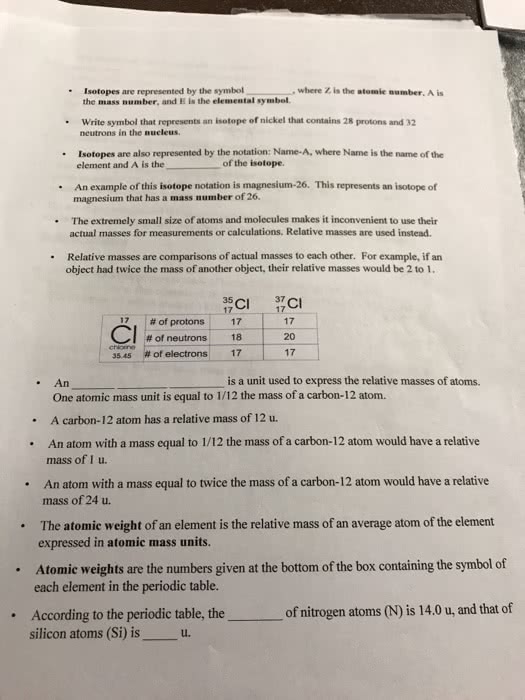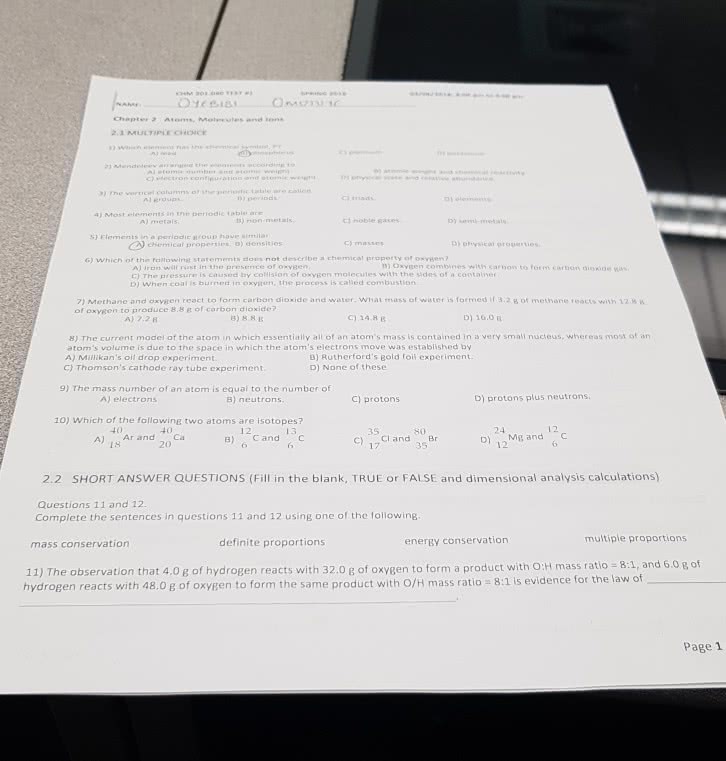CHEM 1127Q Lecture Notes - Lecture 3: Natural Abundance, Unified Atomic Mass Unit, Mass Number
50 views2 pages

44
CHEM 1127Q Full Course Notes
Verified Note
44 documents
Document Summary
Mass number is the number of protons plus the number of electrons. The bottom number is the amount of protons, top number is the mass number. (ie) 57fe has 26 protons, (doesn"t change) 31 neutrons (57-26) and because theres no charge the amount of electrons is equal to the number of protons. Isotopes are atoms with the same number of protons but a different number of neutrons. 12c is . 989323 of all carbon or 98. 93% We can tell where things come from depending on their isotopes. Mass numbers are always whole numbers but the mass on the periodic table is a decimal. The mass on the periodic table is the average mass, you calculate it from the mass number of all of the isotopes and their natural abundance. Atomic mass = (fraction of isotope 1 x mass of isotope 1) + (fraction of isotope 2 x mass of isotope 2) Remember it"s the fraction of the isotope 1.
Get access
Grade+20% off
$8 USD/m$10 USD/m
Billed $96 USD annually

Homework Help
Study Guides
Textbook Solutions
Class Notes
Textbook Notes
Booster Class
40 Verified Answers
Class+
$8 USD/m
Billed $96 USD annually

Homework Help
Study Guides
Textbook Solutions
Class Notes
Textbook Notes
Booster Class
30 Verified Answers
Related textbook solutions
Chemistry: Structure and Properties
2 Edition,
Tro
ISBN: 9780134293936
Basic Chemistry
5 Edition,
Timberlake
ISBN: 9780134138046
Principles of Chemistry Molecular Approach
4th Edition,
Tro
ISBN: 9780134112831
Chemistry: Structure and Properties
2nd Edition,
Tro
ISBN: 9780134293936
Principles of Chemistry Molecular Approach
3rd Edition, 2014
Tro
ISBN: 9780321971944
Chemistry: A Molecular Approach
3rd Edition,
Tro
ISBN: 9780321809247
Chemistry: A Molecular Approach
5th Edition,
Tro
ISBN: 9780134874371
Principles of Chemistry: A Molecular Approach
4th Edition,
Tro
ISBN: 9780134895741
Chemistry: The Central Science
14th Edition, 2017
Brown
ISBN: 9780134414232

